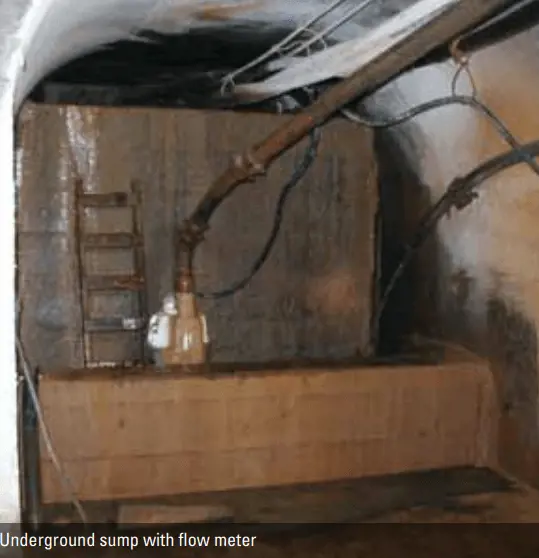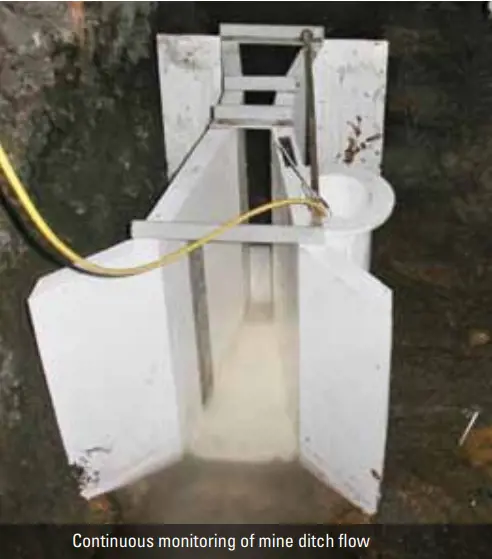Developing a water balance for an underground mining operation can require a variety of measurement techniques to deal with the following challenges:
• Operational efficiency may result in mixing water sources that must be characterised separately to develop a detailed water balance
• Combining all waters in mine discharge may mask variations in flow and chemistry
• Operational activities can make components of the flow system inaccessible
Inflow from surface sources affects the otherwise relatively dry Questa Molybdenum Mine located in northern New Mexico. Mining by the block cave method has produced a subsidence zone that captures surface water drainage. Data collected for a comprehensive water and chemical load balance demonstrated containment by the underground workings. Detailed inflow mapping and chemistry of the various inflows enabled distinct sources of inflow to be identified.
The dewatering system was inventoried and instrumented at 14 locations with non-intrusive ultrasonic flow meters. Pumps were cycled using level switches to eliminate flow measurement interference from air bubbles entrained in the pipe flow by the pumps pulling air. Bag dams with v-notch weir plates collected and monitored inflows, and flumes were deployed in ditches with significant flows. The devices were fitted with data loggers for automated recording of data.
Field data logging instruments were adapted to the active mining operations where routine access to various monitoring locations is restricted. The unattended field instruments needed to be reliable in the presence of dust, high humidity and electrical power fluctuations.
The data demonstrated that inflows balanced to within three percent of the measured mine discharge volume, indicating that virtually all inflow water was captured and contained in the workings. The chemical load balance, developed from quarterly samples at each flow monitoring station, enabled the sources of inflow to be identified.
Conclusions drawn from the investigation showed that 1) a high density of flow data and quarterly samples is required to address seasonal changes in inflow rates and chemistry; 2) creative solutions to adapt existing underground water management facilities can effectively monitor flows in detail yet minimise interference with operations; 3) ultrasonic metering of mine water pipe flow is viable and eliminates intrusive installations; and, 4) relatively simple data sets can provide critical insights to sources of inflow waters and chemical changes to them.



